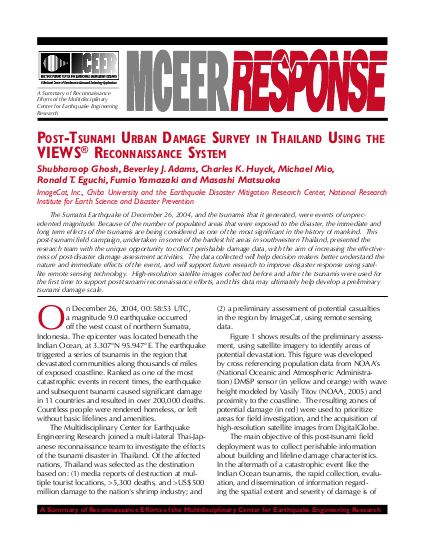
The Sumatra Earthquake of December 26, 2004, and the tsunamis that it generated, were events of unprecedented magnitude. Because of the number of populated areas that were exposed to the disaster, the immediate and long term effects of the tsunamis are being considered as one of the most significant in the history of mankind. This post-tsunami field campaign, undertaken in some of the hardest hit areas in southwestern Thailand, presented the research team with the unique opportunity to collect perishable damage data, with the aim of increasing the effectiveness of post-disaster damage assessment activities. The data collected will help decision makers better understand the nature and immediate effects of the event, and will support future research to improve disaster response using satellite remote sensing technology. High-resolution satellite images collected before and after the tsunamis were used for the first time to support post-tsunami reconnaissance efforts, and this data may ultimately help develop a preliminary tsunami damage scale.
Resource collections
- Evaluating humanitarian action
- Monitoring and Evaluation (M&E)
- Monitoring of humanitarian action
- Topics
- UN Habitat - Urban Response Collection
- Urban Response - Urban Crisis Preparedness and Risk Reduction
- Urban Response Collection - Community Engagement and Social Cohesion
- Urban Response Collection - Economic Recovery
- Urban Response Collection - Environment and Climate Change
- Urban Response Collection - Housing, Land and Property
- Urban Response Collection - Urban Crisis Response, Recovery and Reconstruction
- Urban Response Collection - Urban Resilience
- Use of evaluation evidence
